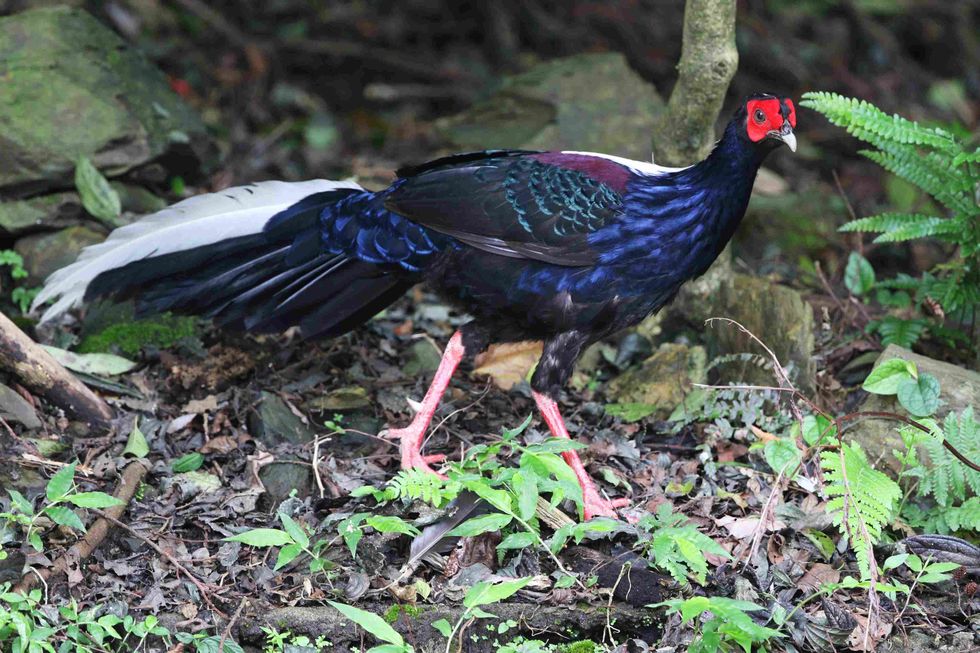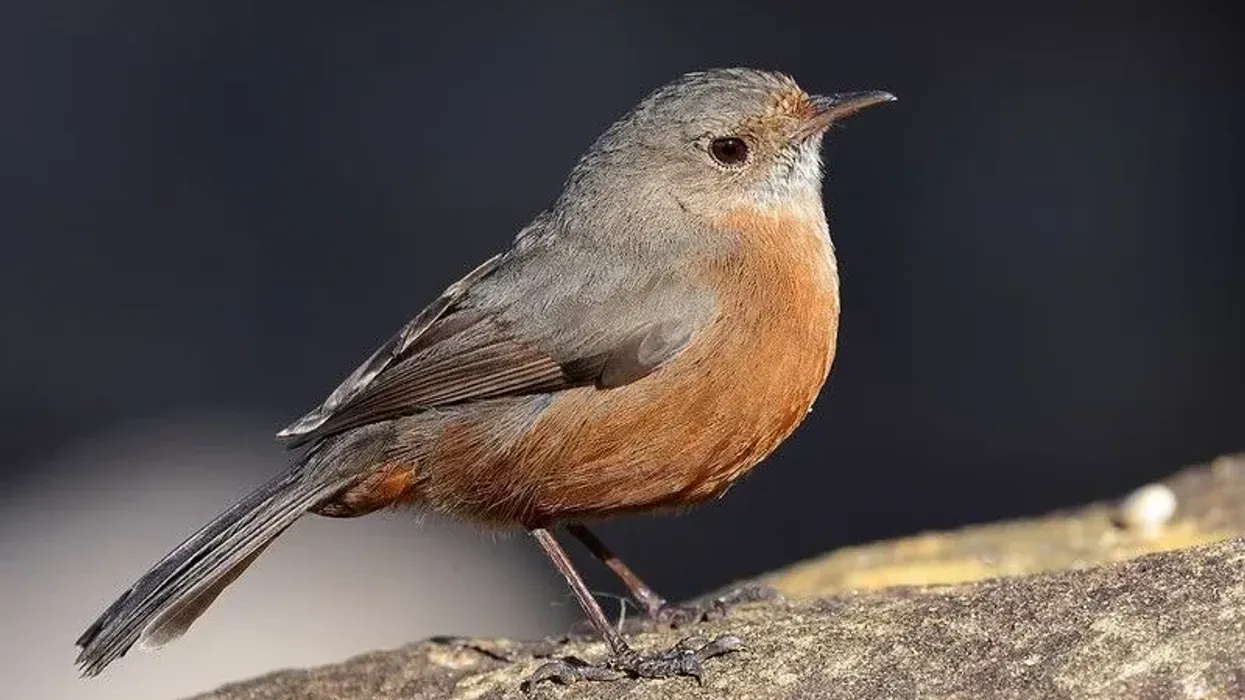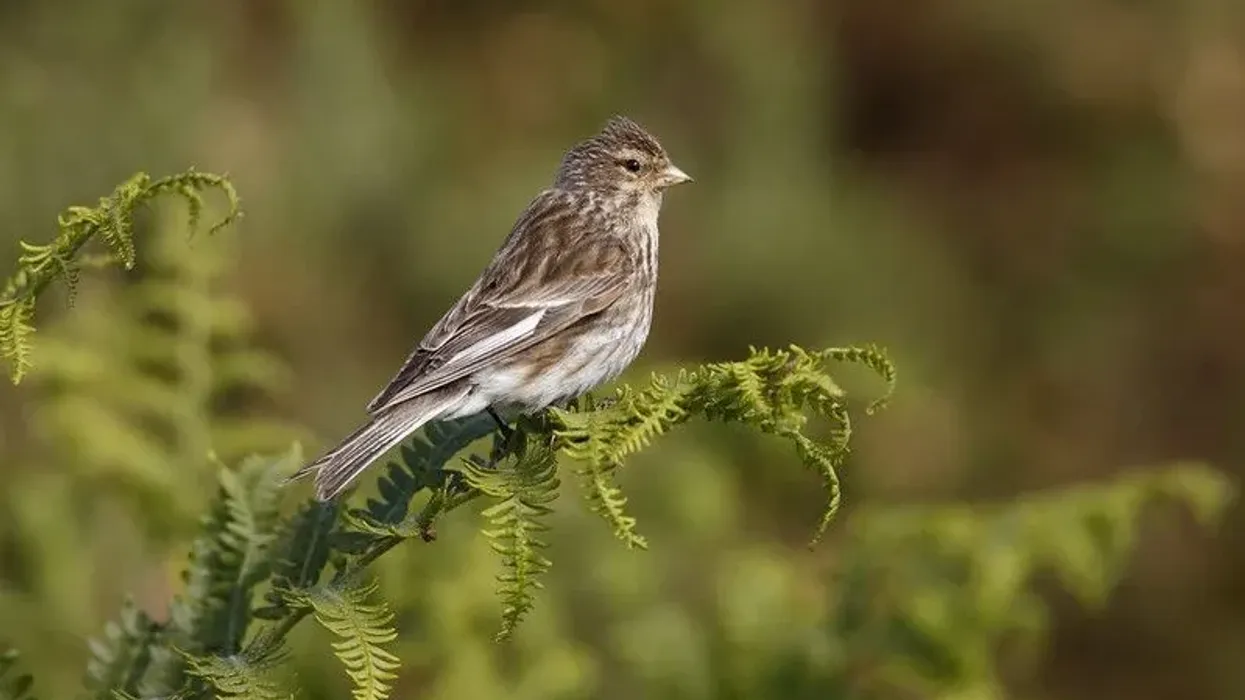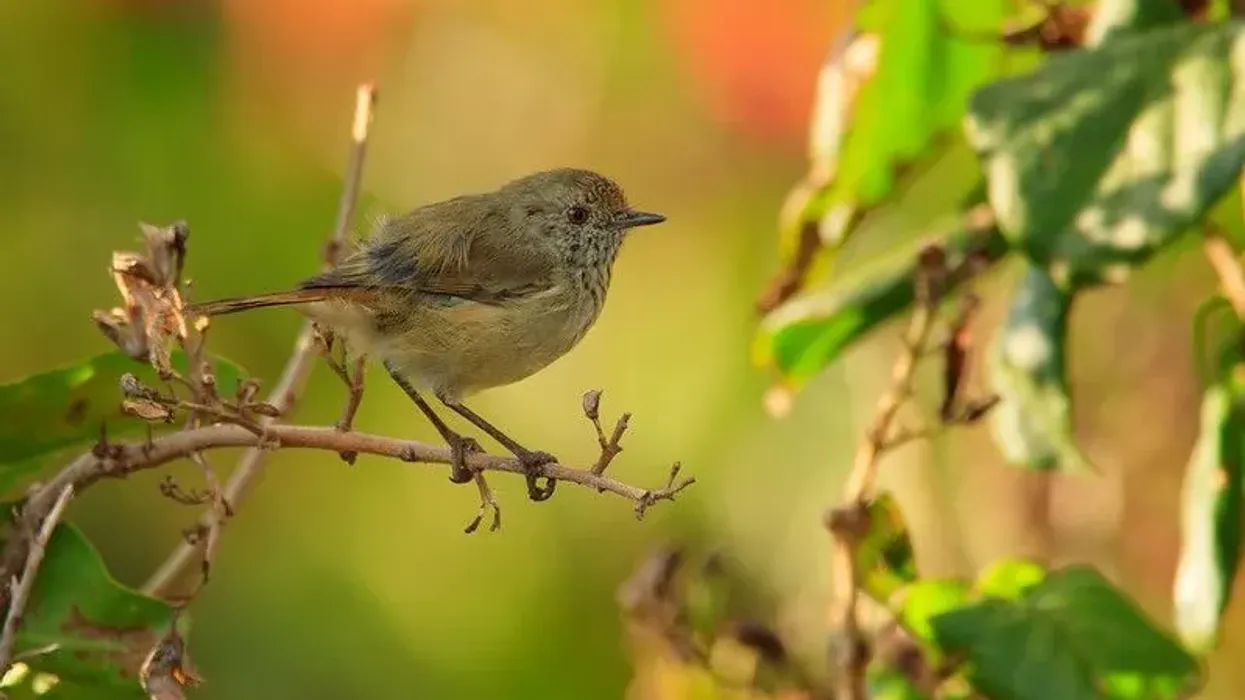Swinhoe's Pheasant, Lophura swinhoii, is a pheasant subfamily bird of the Phasianidae family. It is widely referred to as Taiwan's unofficial 'national bird.' There are no subspecies known.
Swinhoe's pheasants are discovered by Robert Swinhoe. The Swinhoe's pheasant is a bird that is endemic to the pristine broadleaf forests of Taiwan below 820 ft (2,500 m) in elevation.
Females have reddish legs, broader tail feathers. They have royal blue curved tail feathers. Their dark blue plumage slides down from the neck to the chest.
The males have bluish-green color on the edges of feathers but the female feathers have an olive-brown color. They have a white crest and an upper back white patch. Females have a brown crest.
Both sexes have red facial skin. They eat plant matter but are not hardy grass eaters.
The habitat destruction of these species might lead to them being endangered soon. Female pheasant birds are not as noisy as males, but they produce specific calls to warn her clutch of young chicks of oncoming danger and call them back together.
Crowing is used by pheasants to communicate a variety of emotions, including fear, agitation, copulation, anxiety, and incubation.
Swinhoe's Pheasant, Lophura swinhoii, is a pheasant subfamily bird of the Phasianidae family. It is widely referred to as Taiwan's unofficial 'national bird.' There are no subspecies known.
Swinhoe's pheasants are discovered by Robert Swinhoe. The Swinhoe's pheasant is a bird that is endemic to the pristine broadleaf forests of Taiwan below 820 ft (2,500 m) in elevation.
Females have reddish legs, broader tail feathers. They have royal blue curved tail feathers. Their dark blue plumage slides down from the neck to the chest.
The males have bluish-green color on the edges of feathers but the female feathers have an olive-brown color. They have a white crest and an upper back white patch. Females have a brown crest.
Both sexes have red facial skin. They eat plant matter but are not hardy grass eaters.
The habitat destruction of these species might lead to them being endangered soon. Female pheasant birds are not as noisy as males, but they produce specific calls to warn her clutch of young chicks of oncoming danger and call them back together.
Crowing is used by pheasants to communicate a variety of emotions, including fear, agitation, copulation, anxiety, and incubation.
Swinhoe's Pheasant Interesting Facts
What type of animal is a Swinhoe's pheasant?
Swinhoe's pheasants (Lophura swinhoii) are birds of the family Phasianidae and subfamily Pheasant. They are also known as the Taiwan blue pheasant as they are endemic to the forest of that place.
What class of animal does a Swinhoe's pheasant belong to?
Swinhoe's pheasant belongs to the phylum Chordata, class Aves, order Galliformes, and genus Lophura. It is only found in Taiwan.
Swinhoe's pheasant, like the Taiwan blue magpie, and Mikado pheasantis are regarded as an unofficial national symbol of Taiwan since it carries the color of the national flag (white, red, and dark blue). Swinhoe's pheasants are endemic to the Central mountain forest of Taiwan.
How many Swinhoe's pheasants are there in the world?
The distribution of these birds is estimated to be roughly more than 10,000 currently. It was once hunted, and some species were wiped off in the '60s and '70s. Within protected regions, some populations are safe, but others may be deteriorating.
Where does a Swinhoe's pheasant live?
Central Taiwan is the area where these pheasants are endemic, especially in the natural environment of dense forest in mountain ranges.
What is a Swinhoe's pheasant's habitat?
These birds have natural habitat that has been identified as a deep forest. They can, however, be spotted foraging in the wild along woodland pathways or on forest boundaries.
Swinhoe's Pheasant ranges from sea level to 820 ft (2,500 m) in the forest of Central Mountain Range. They reside on the forest floor, where the canopy is dense and the undergrowth is scarce. They can also be found in mature secondary growth forests, mixed forests, and bamboo forests.
Who do Swinhoe's pheasants live with?
In the natural environment, Swinhoe's Pheasants live in small groups of three to four in a forest. These pheasants can be kept in groups of two or three. They require a large aviary with plenty of covers, but only a basic shelter is required because they are quite resilient and can endure both temperature extremes.
How long does a Swinhoe's Pheasant live?
Although these birds survive for less than two years in the wild, in captivity, and with proper care, the Swinhoe's Pheasant may live for 10 - 15 years, and possibly more.
How do they reproduce?
In the spring, Swinhoe's Pheasants have their breeding season. Males show off by bobbing their heads, hopping, and flapping their wings while maintaining their white crests and scarlet wattles up.
The nests are constructed in well-hidden areas, such as atop a tree or under a huge shelter, where they are sheltered from weather and predators. The female delivers four to eight glossy eggs per batch in march in nests and incubate them on her own.
Their breeding season is around March till May. After about 25 days of incubation, the chicks hatch.
On the last day of incubation, the egg is placed on its own oval mesh. They have delicate down coverings and will develop adult plumage during the second year.
What is their conservation status?
The current conservation status of Swinhoe's pheasant according to the IUCN (International Union for Conservation of Nature) is Near Threatened (NT). Their populations at different places are not endangered yet but are on the verge of if habitat destruction continues. They are now protected by CITES.
Swinhoe's Pheasant Fun Facts
What do Swinhoe's pheasants look like?
Swinhoe's pheasants are huge birds with striking colors. Males have brilliant red skin on their faces, wattles, and legs.
Their feathers are predominantly shades of dark blue with sapphire and teal blue laced patterns from the neck to the chest and flanks. They have a metallic blue neck.
They have a white crest and an upper back white patch. A glossy purplish-reddish strip of coloration over the shoulders adds to their majesty. The tails of these birdsare roughly half the length of their bodies.
It's full, with a pair of white color plumage that stand out vividly against a stock of royal blue curved tail feathers. Females of this species have a brown crest with red wattles, but the wattles are shorter than the males.

We've been unable to source an image of Swinhoe's pheasants and have used an image of common pheasants instead. If you are able to provide us with a royalty-free image of Swinhoe's pheasants, we would be happy to credit you. Please contact us at hello@kidadl.com.
How cute are they?
Being very colorful and little, Swinhoe's pheasant is a very adorable bird. Their vibrant plumage gives them a very shiny and royal look. You would definitely want to take some pictures with them!
How do they communicate?
Swinhoe's pheasant make various sounds that may seem like noises, but they make them when they get uncomfortable or feel danger during the night. When they get hungry and find no food in their vicinity, they tend to make harsh noises.
How big is a Swinhoe's pheasant?
Both male and female Swinhoe's pheasant have different body lengths. Males have an average length of 28 in (70 cm) and the female is 20 in (50 cm) in length.
How fast can a Swinhoe's pheasant fly?
The exact speed of flying of a Swinhoe's pheasant is not known yet, but the very close species of common pheasant has a flying speed of 27–38 mph (43–61 kph)
How much does a Swinhoe's Pheasant weigh?
The average weight of these birds with beautiful wings ranges from 1.1-6.6 lb (0.5 -3 kg).
What are their male and female names of the species?
There are no specific names given to the male and the female of this species.
What would you call a baby Swinhoe's pheasant?
The young ones of Swinhoe's pheasant are called a 'chick'.
What do they eat?
In the wild, the diet is diverse, consisting of both plant matter in a particular season (berries, buds, nuts, and leaf shoots) and worms and insects. Swinhoe's pheasants forage in pairs on the ground in the day, often in the morning and late afternoon.
Their diet do not involve much hardy grass matter. Every day, the Swinhoe's pheasant takes the same feeding path across the forest.
Pheasants go in and out of apparent paths through the undergrowth along forest trails on a daily basis. However, these trails are not permanent, and the same bird may have multiple entrances in a given location.
Are they dangerous?
No, they are not dangerous. Sometimes they can be loud and might bite with their beaks if feel threatened.
Would they make a good pet?
Yes, they will make a good pet. These birds can adapt very easily to different situations and are not complex by nature. It's just that you have to bear their loud noises sometimes.
A minimum of 150 sq ft (13.9 sq m) of aviary area is required per bird. Although Swinhoe's Pheasants are mostly solitary in the wild, they can be successfully housed in pairs or trios provided the hens are friendly.
Male pheasants should not be housed with another male pheasant species or kept together. Swinhoe's Pheasants roost in trees at night, thus they will require raised roosting sites.
They'll need secluded and sheltered locations within the aviary for laying and/or nesting, which resembles the shelter of tree trunks or huge boulders. They are sturdy and tolerant of cold weather.
They adore dusting, so provide them with sand or dry soil area where they may dust and maintain their plumage gleaming. Ensure their enclosure is free of predators, even the tiniest ones like mink and weasels.
Did you know...
These are well-established and widely used in aviculture, as they are extremely durable and adaptable to a wide range of climates. Swinhoe's pheasants are an excellent 'beginning pheasant.' They are uncomplicated and quiet. They are so much in demand because of their beauty they are sold for more than $187.50.
What do Swinhoe's pheasants sound like?
Swinhoe's pheasant has sounds that may seem like loud noises. Having many pairs of them can be a very bad situation.
Male pheasants are said to crow all day and night, and year and their crows indeed seem like a chicken rooster's crow cut short. They create two high-pitched sounds and most of the time they flap their wings furiously, usually for territorial declaration, which can be disputed if another pheasant is present.
While female pheasant birds are not as loud as males, they have distinct sounds that notify her clutch of young chicks of impending danger and also call them back together. Pheasants crow to express a wide range of emotions, including fear, agitation, copulation, anxiety, and incubation.
Why is it called Swinhoe's pheasant?
The Swinhoe's pheasant was named after its discoverer, British ornithologist, and naturalist Robert Swinhoe, in 1862. The Formosan Pheasant is another name for it. Mountain chickens, Blue pheasants, and red-footed are some of the names given to them by Taiwanese people.










